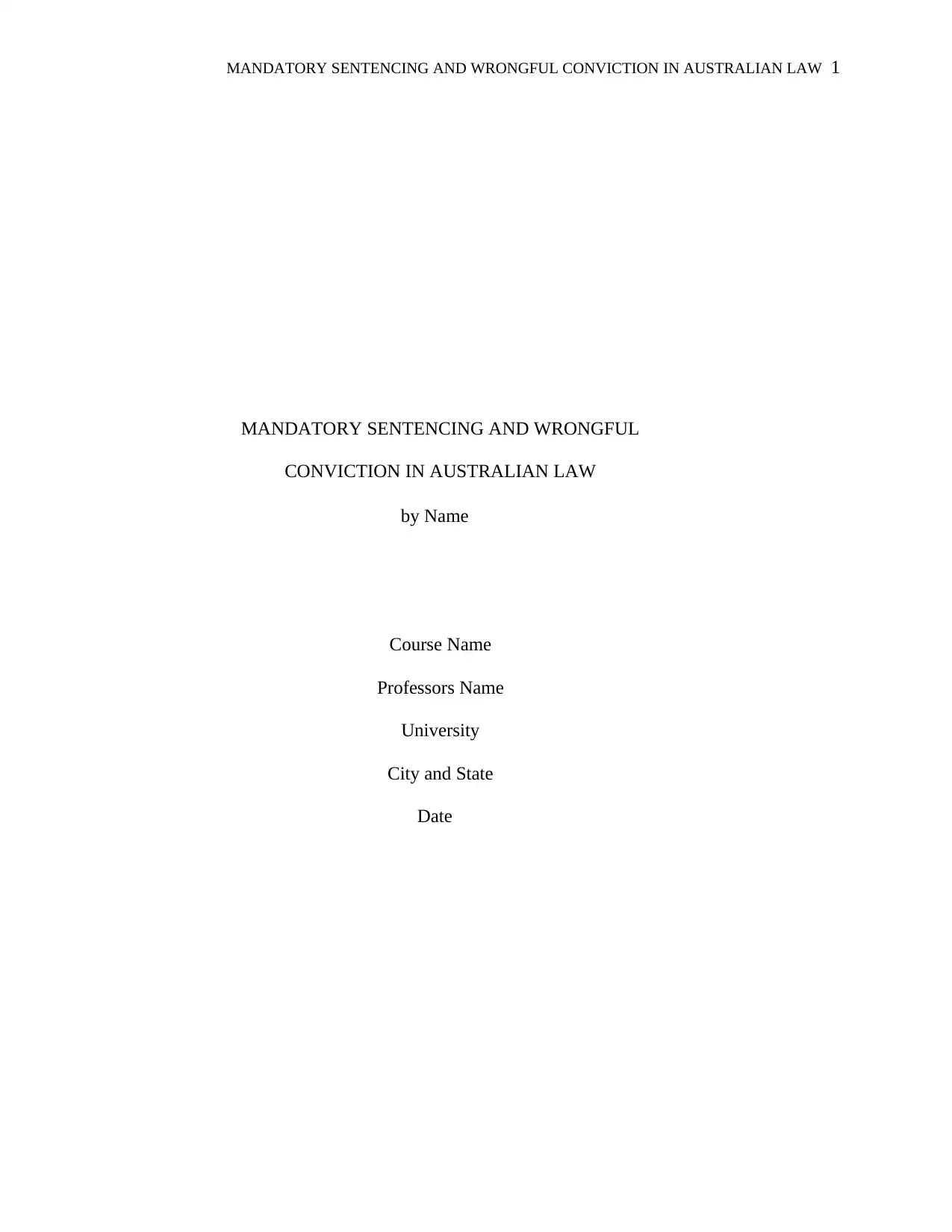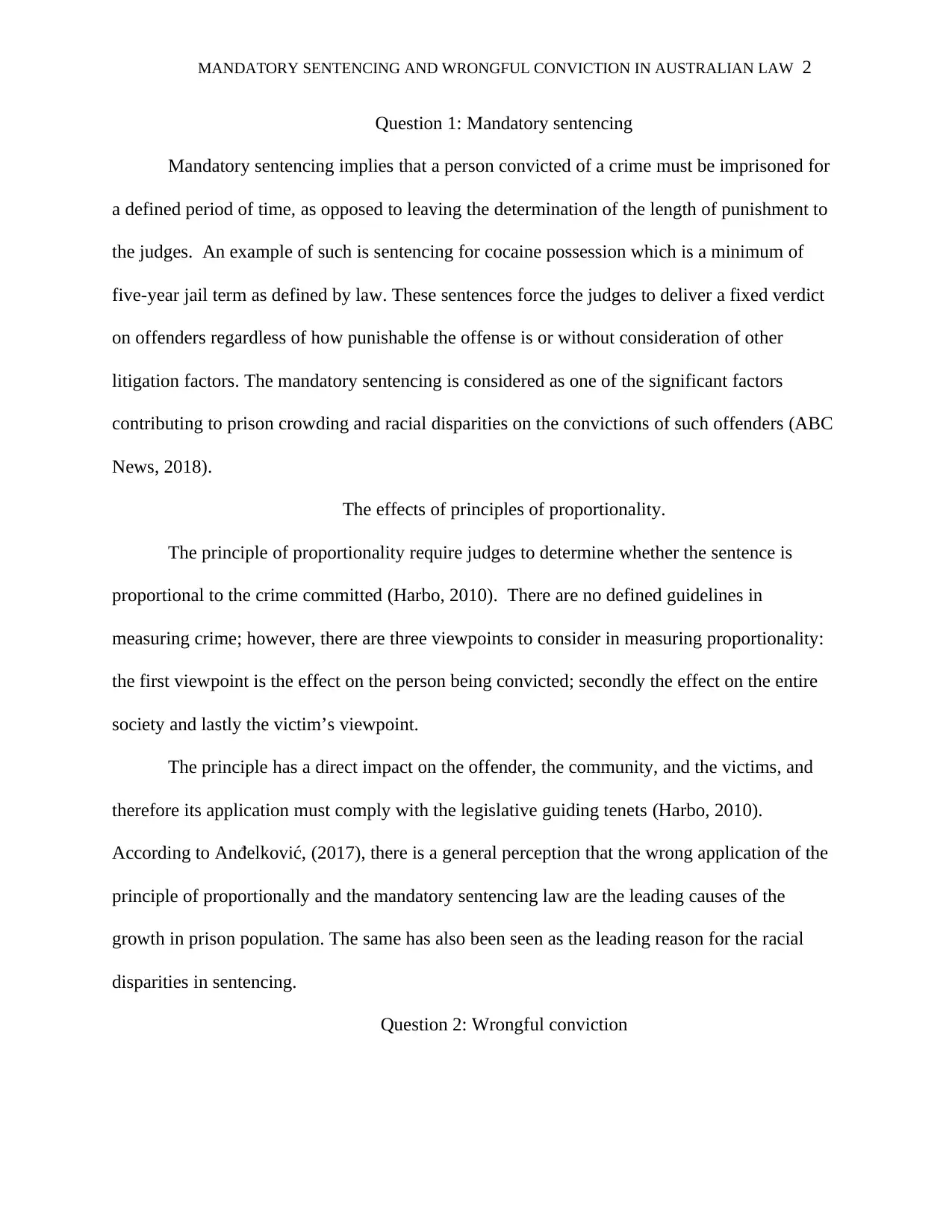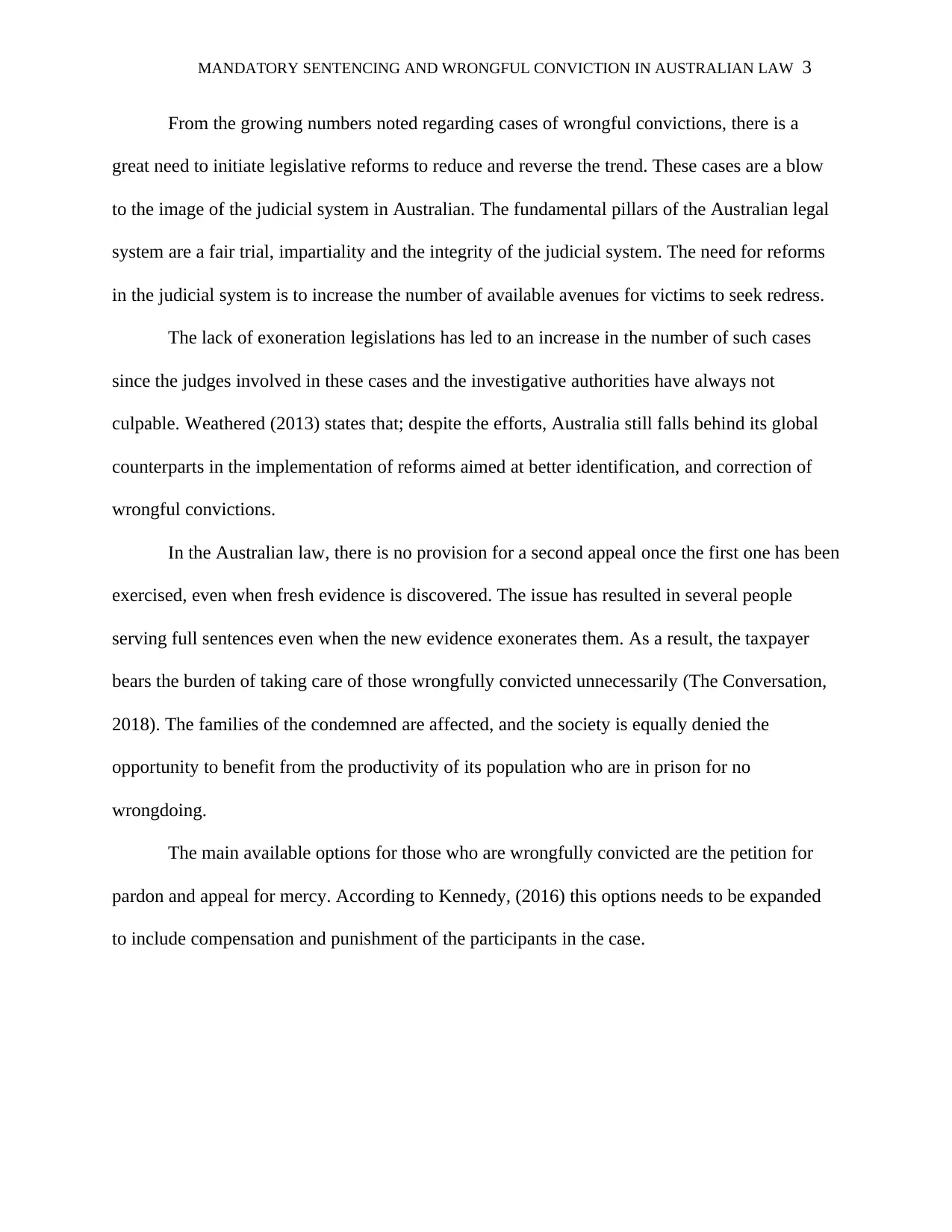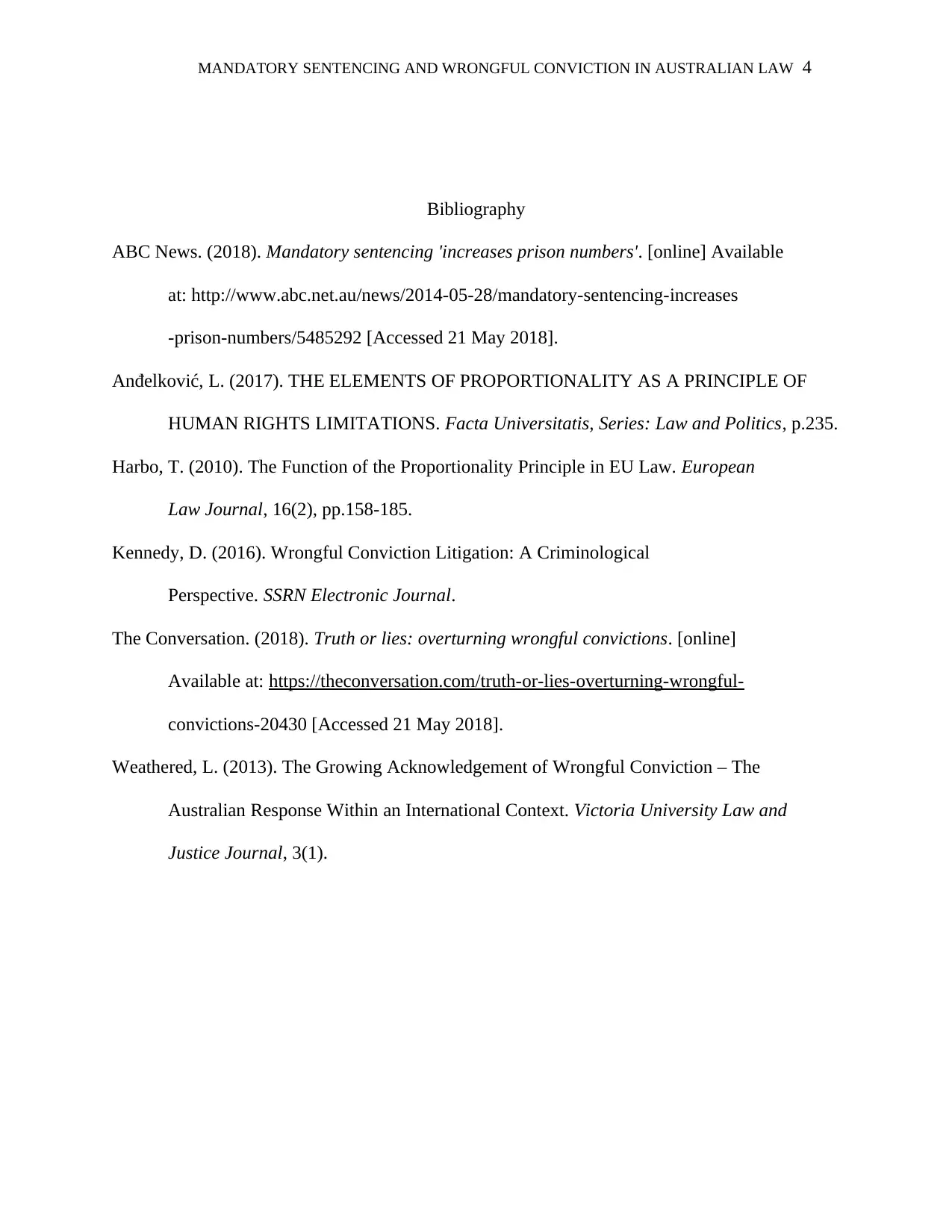Sentencing & Wrongful Convictions in Australian Law - Essay
VerifiedAdded on 2023/06/12
|4
|820
|108
Essay
AI Summary
This essay examines the issues of mandatory sentencing and wrongful convictions within the Australian legal system. It explores how mandatory sentencing, which requires judges to impose fixed sentences regardless of individual circumstances, can contribute to prison overcrowding and racial disparities. The essay also discusses the principle of proportionality in sentencing and its impact on offenders, communities, and victims. Furthermore, it addresses the growing concern of wrongful convictions, highlighting the need for legislative reforms to provide avenues for redress and compensation for those wrongly convicted, as the current system lacks sufficient mechanisms for correcting such errors and supporting exonerated individuals. The essay concludes by emphasizing the importance of fair trials, impartiality, and integrity within the judicial system to prevent miscarriages of justice.
1 out of 4










![[object Object]](/_next/static/media/star-bottom.7253800d.svg)